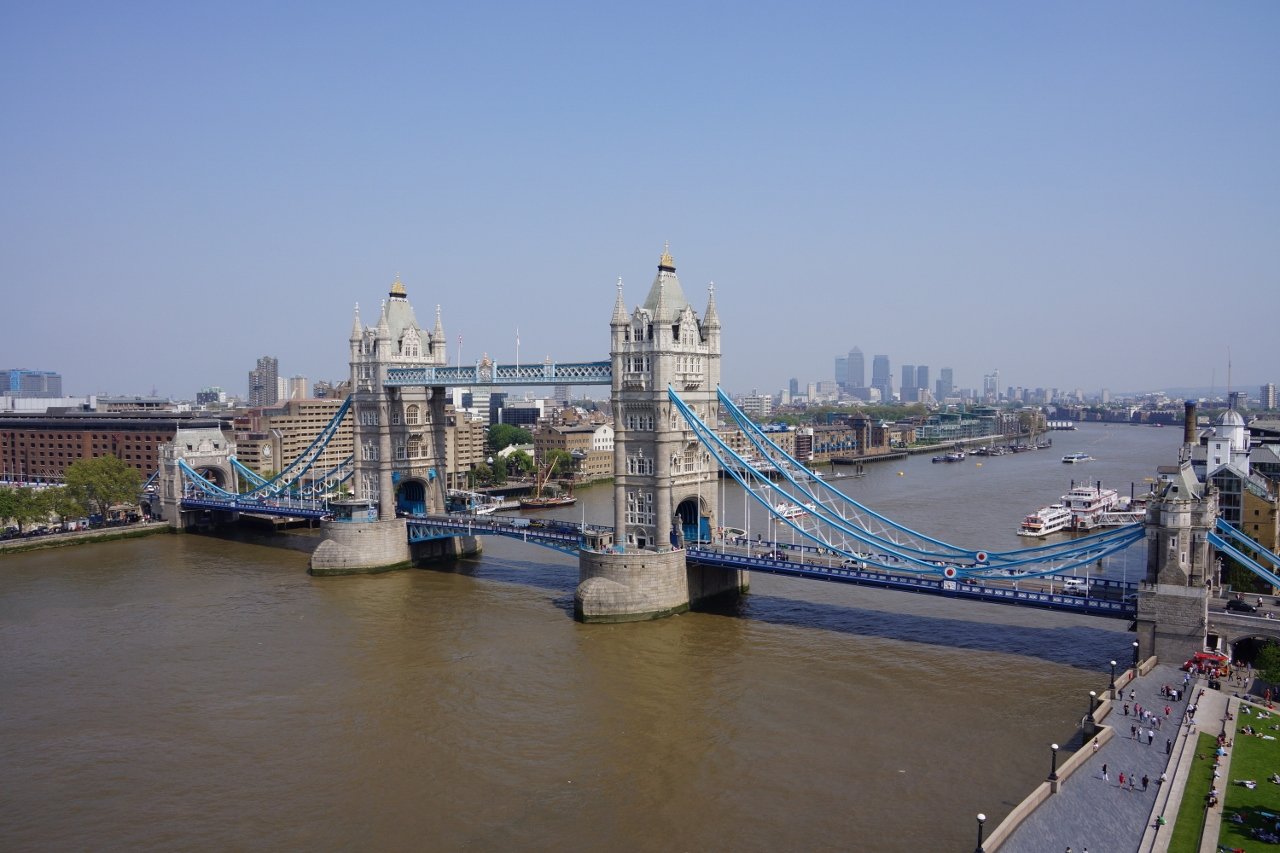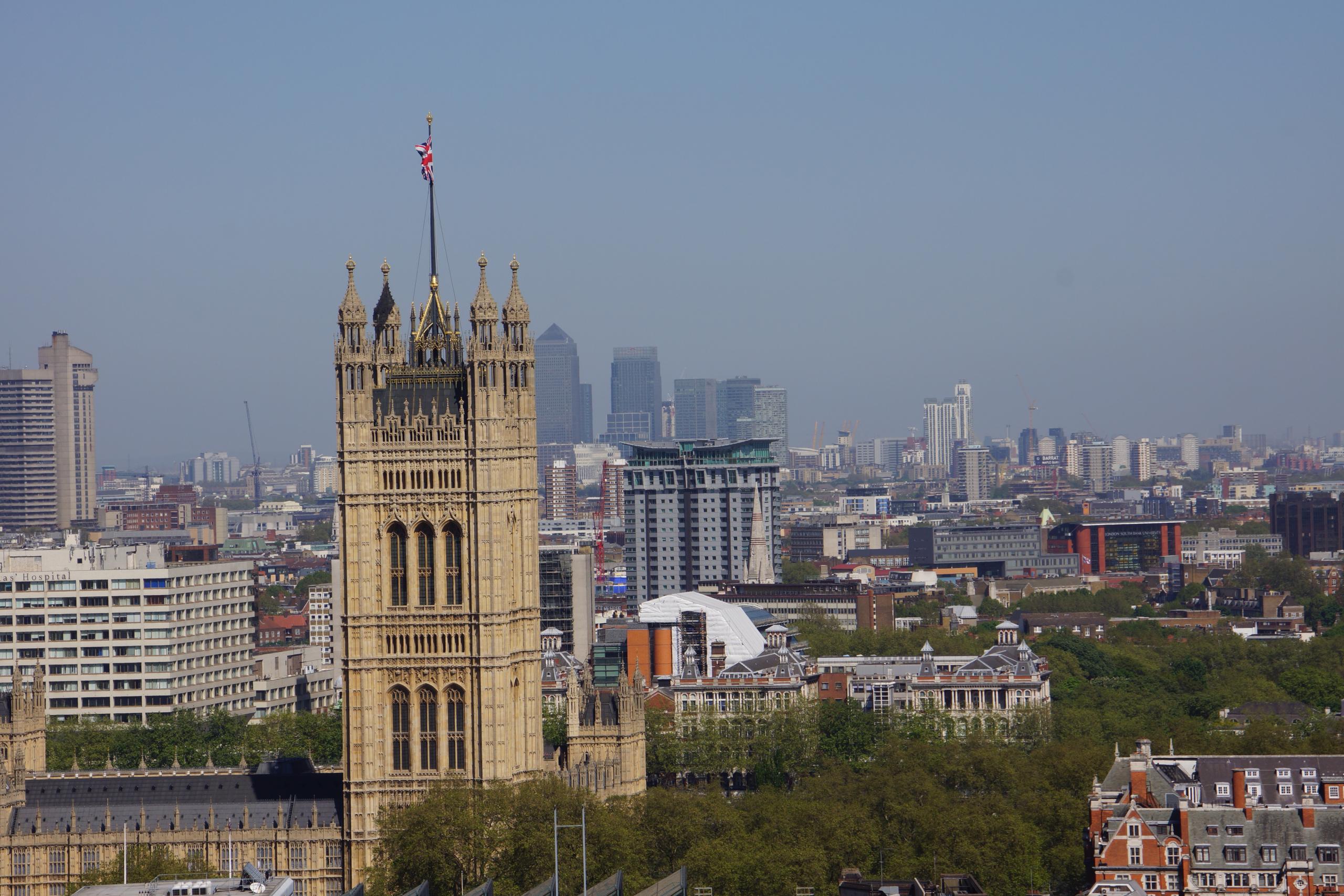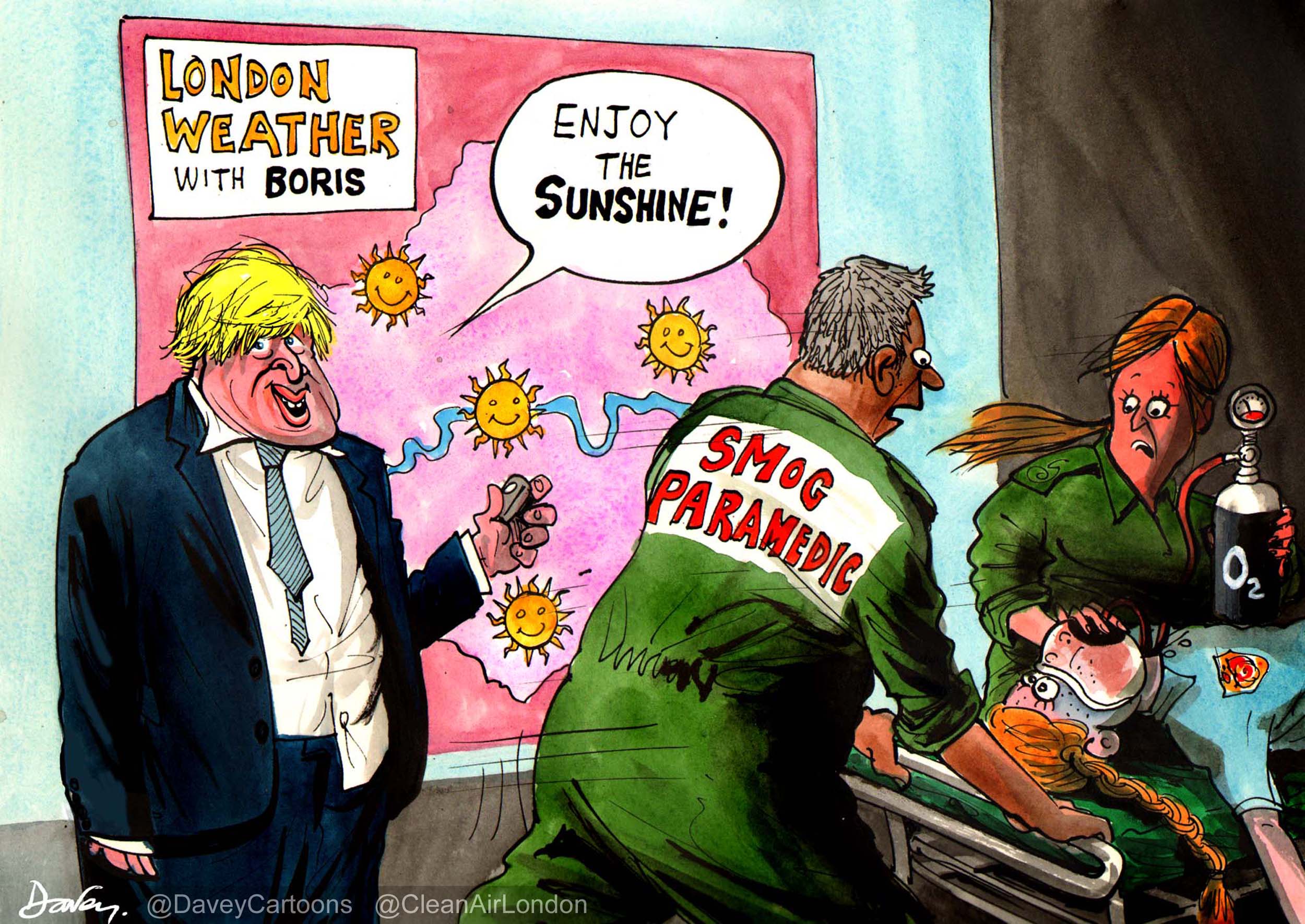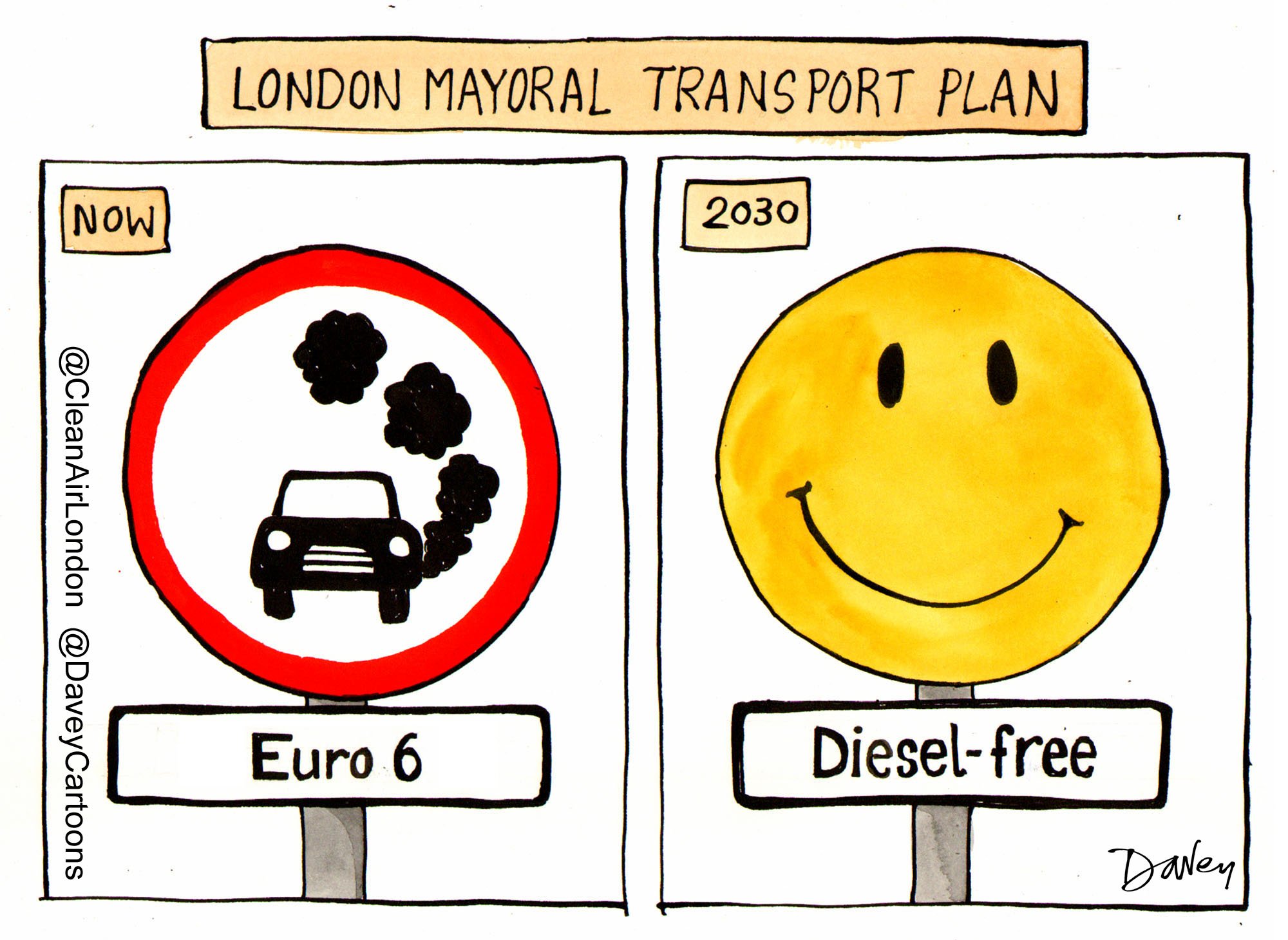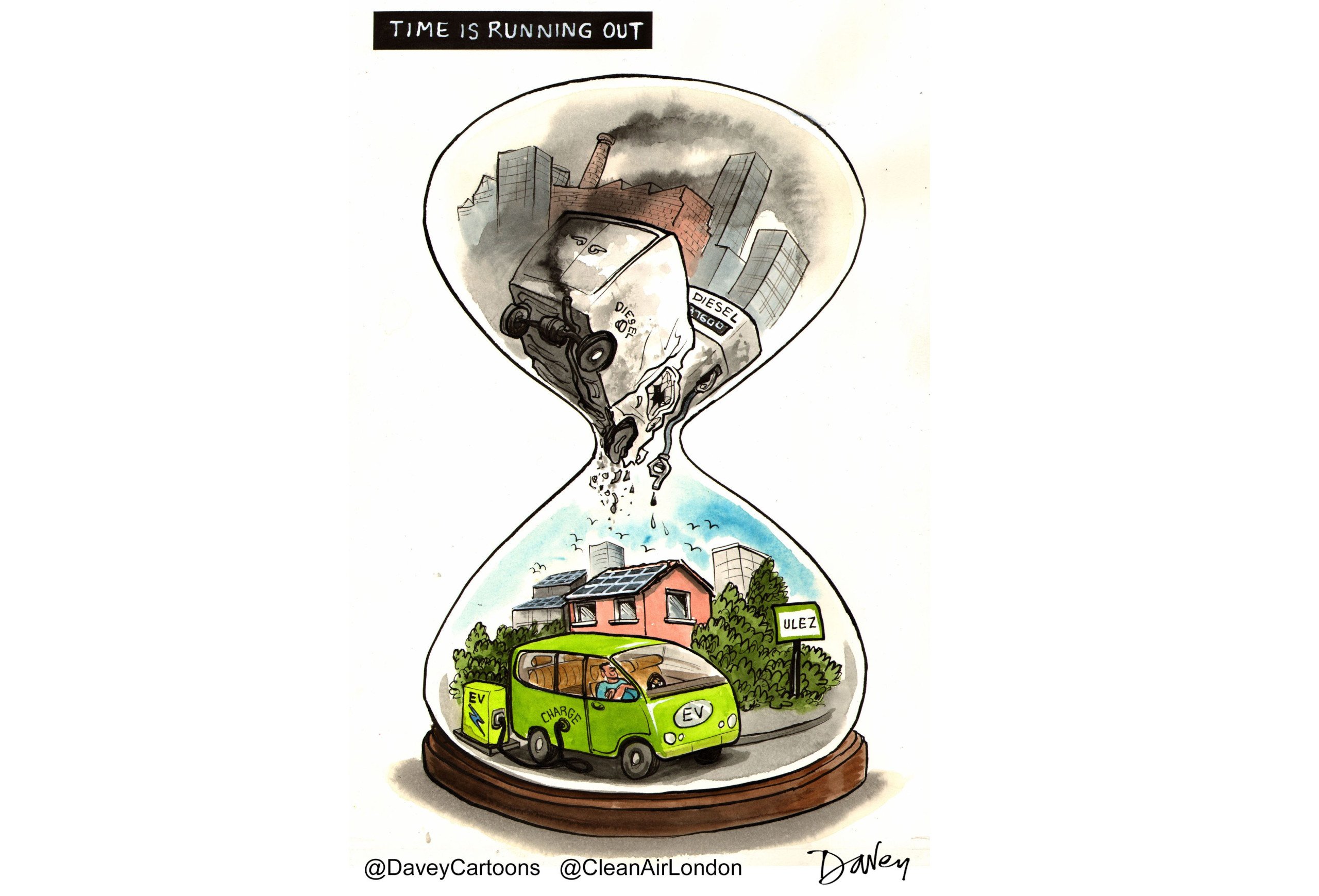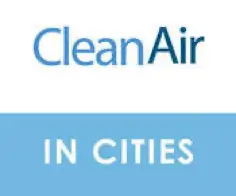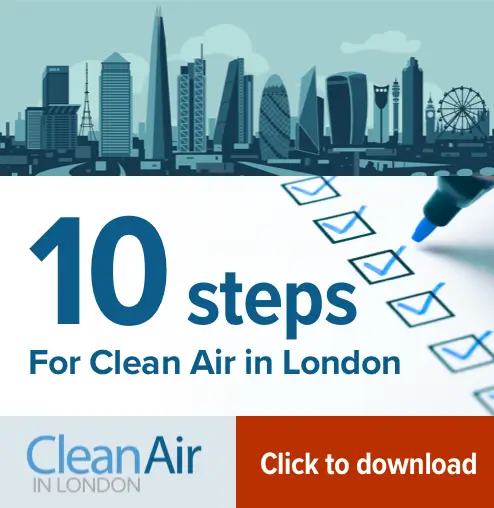Known health and other impacts of air pollution have risen much faster than levels of air pollution have fallen
1. How bad is air pollution in London?
- London has the highest levels of nitrogen dioxide (NO2) pollution of any capital city in Europe. Concentrations of dangerous airborne particles (PM10) also breach legal limits in several parts of the city particularly near waste management sites.
- Government estimates that some 440,439 Londoners were exposed to unlawful levels of NO2 in 2011 at background locations alone i.e. away from busy roads.
- London’s residents are not the only ones affected by poor air quality. Every day hundreds of thousands of people commute into the polluted heart of London. NO2 concentrations are well over twice legal limits and World Health Organisation (WHO) guidelines near many London roadside monitoring sites. NO2 limits are also breached at a larger number of city centre ‘background’ sites away from busy roads.
2. What are the health impacts of air pollution in London?
- Air pollution comprises particles and gases. The particles are categorised by their maximum diameter in microns e.g. PM2.5 and PM10. In practice, nitrogen dioxide (NO2), a toxic gas, is the only molecule within the gas category with relevant WHO guidelines and legal limits.
- Poor air quality has a significant impact on the health of London residents. The Mayor published a study in 2010 estimating 4,267 premature deaths in London in 2008 attributable to long term exposure to fine particles (PM2.5). These occur mostly as heart attacks and strokes. The Department of Health estimates 6.3% to 9.0% of all deaths in London in 2010 were attributable to long-term exposure to man-made PM2.5 alone.
- Children, the elderly and people with existing respiratory illness suffer disproportionately from the effects of air pollution. Over 1,100 schools in London are within 150 metres of the city’s busiest and most polluted roads (i.e. those that carry over 10,000 vehicles a day). Traffic pollution from such roads may be responsible for 15-30% of all new cases of asthma in children and chronic obstructive pulmonary disease in adults of 65 years of age and older.
3. Are there air pollution standards that London should be meeting?
- Legally binding, health based limit values have been set for several air pollutants by the European Union since 1999. London is failing to meet these for PM10 and NO2.
- For PM10 London was required to meet limit values by 2005 but obtained unlawfully a time extension in 2011 to comply that year. That time extension has now expired but London has continued to exceed PM10 limits known as ‘Bad Air Days’ particularly near waste management sites e.g. Neasden Lane in Brent.
- NO2 limits were required to be met by 2010. The Government has admitted they are not expected to be met in London before 2025 and has been caught seeking to weaken NO2 laws.
- The Commission is expected to commence infraction action against the UK early in 2013.
- Useful generic background, resources and links for those involved in planning issues in London (and elsewhere) https://cleanair.london/indoor-air-quality/eight-wins-for-clean-air-in-london-in-new-london-plan/
4. What are the authorities doing to reduce air pollution in London?
The Mayor of London’s Air Quality Strategy is not ‘fit for purpose’. The Mayor has also used Pollution Suppressor vehicles to reduce air pollution near air quality monitoring stations most-used to report legal breaches and warn the public of smog episodes. The Mayor has also been caught lobbying to weaken international air pollution laws.
Diesel engine exhaust, recently classified by the World Health Organisation as carcinogenic to humans, is a particular problem in London which has: some 8,500 diesel buses; over 20,000 diesel taxis; and a low emission zone that is two steps and two years behind the equivalent in Berlin. A ground breaking study by Policy Exchange found that diesel vehicles are responsible for 95% of NO2 and 91% of PM2.5 exhaust emissions respectively from road transport in London.
The Government has not published a press release warning of smog since April 2011 when it made headline news. The Mayor also refuses to issue public warnings of smog even though Murad Qureshi AM discovered that hundreds of additional people in London have been admitted to hospital during smog episodes in the last five years alone.
5. Supporting guides, links and contacts
Guides
Health: ‘Invisible’ air pollution: the biggest public health failing or ‘cover-up’ for decades
Legal: UK is cheating on air quality laws and misleading the European Commission
Sources: London has the highest levels of NO2 of any capital city in Europe
Solutions: Manifesto for the Mayoral and London Assembly elections in 2012
Indoor: Indoor air quality can be worse than outdoor
| Pollutant | Legal standard | World Health Organisation guideline | ||
| Short term | Annual mean | Short term | Annual mean | |
| Fine particulate matter (PM2.5) |
|
25 ug/m324-hour mean | 10 ug/m3 | |
| Particulate matter (PM10) | 35 days over 50 ug/m3 since 2011 | 40 ug/m3since 2011 | 50 ug/m324-hour mean | 20 ug/m3 |
| Ozone (O3) | 25 days over 120 ug/m3 maximum daily 8-hour mean target value averaged over 3 year since 2010 | 100 ug/m3 8-hour mean | ||
| Nitrogen dioxide (NO2) | 18 hours over 200 ug/m3 since 2010 | 40 ug/m3 since 2010 | 200 ug/m3 | 40 ug/m3 |
Note: ug/m3 is micrograms per cubic metre
Examples of legal breaches in 2012
London Air Quality Network: Marylebone Road
Smog episodes
London Air Quality Network: Latest hourly bulletin
London Air Quality Network: Health advice
London Air Quality Network: Reports on smog episodes
Defra website: UK-Air: Air Information Resource (selective monitoring)
Article from The Independent newspaper on the effects of air pollution on athletes, quoting air pollution and health expert Professor Frank Kelly (Kings College, London)
LBC Radio 97.3 news on 27 February 2013
http://audioboo.fm/boos/1236065-mayor-s-office-keep-kids-indoors-on-smog-days#t=0m0s
CAL 221 EEB Agenda_Air conference 080113
CAL 230 NGO joint position paper with logos 050313
CAL 256 UK AQ Zones and AQ as reported September 2013_Updated draft 311213

